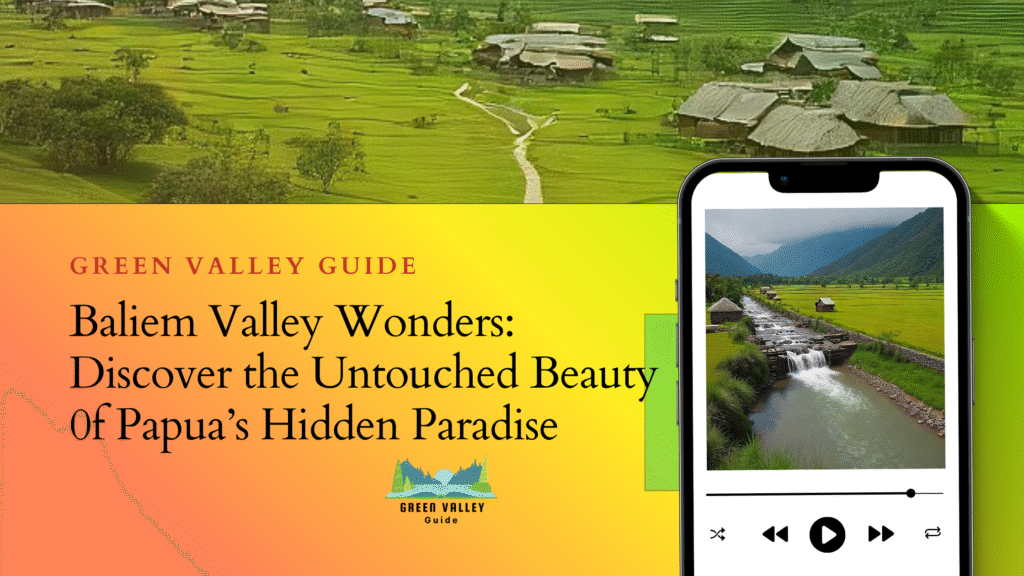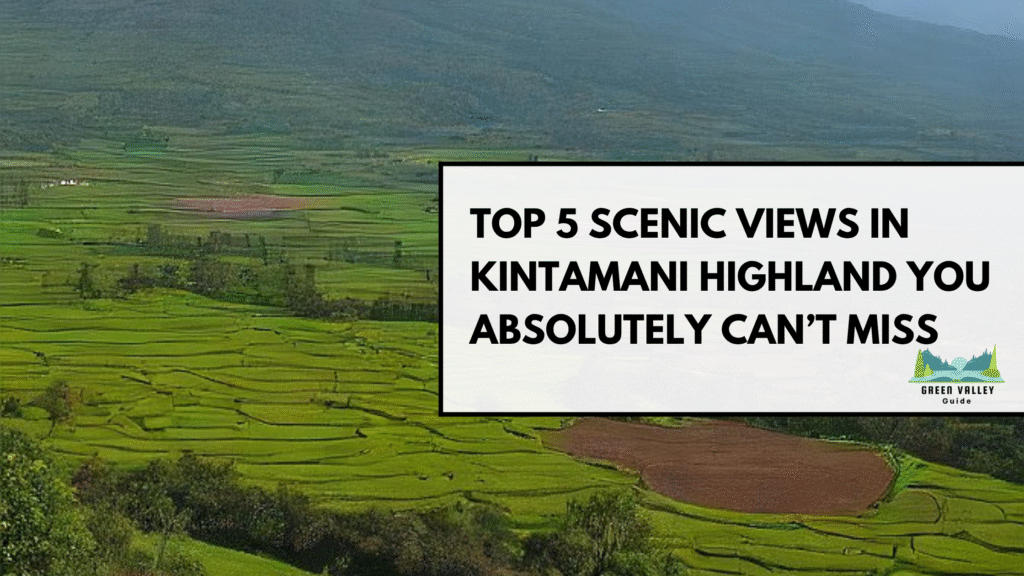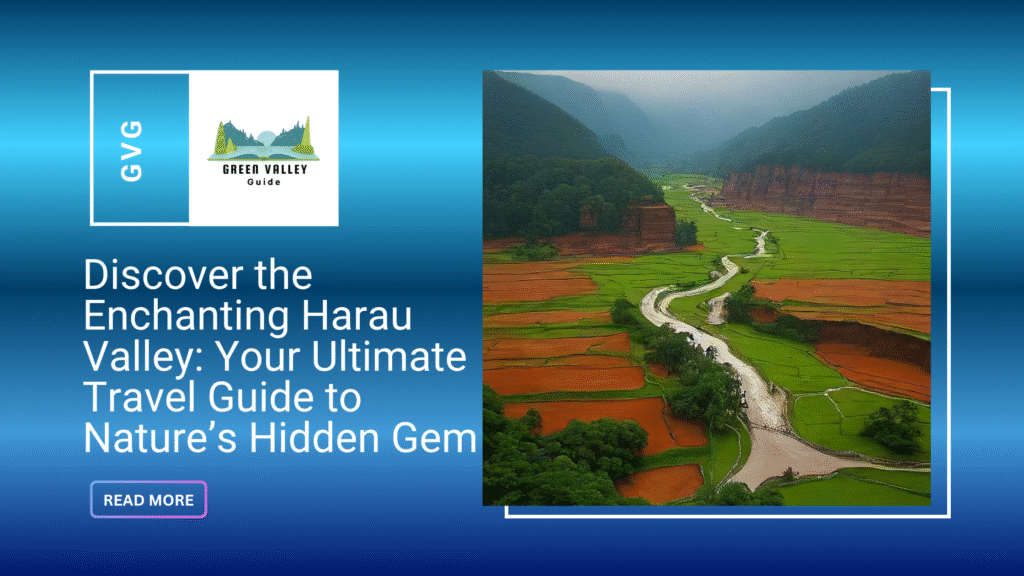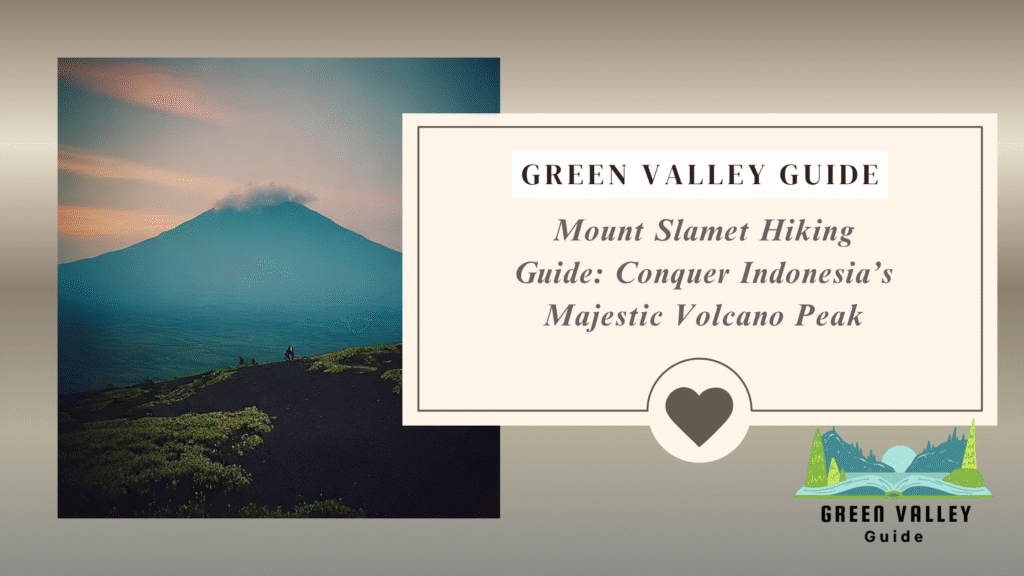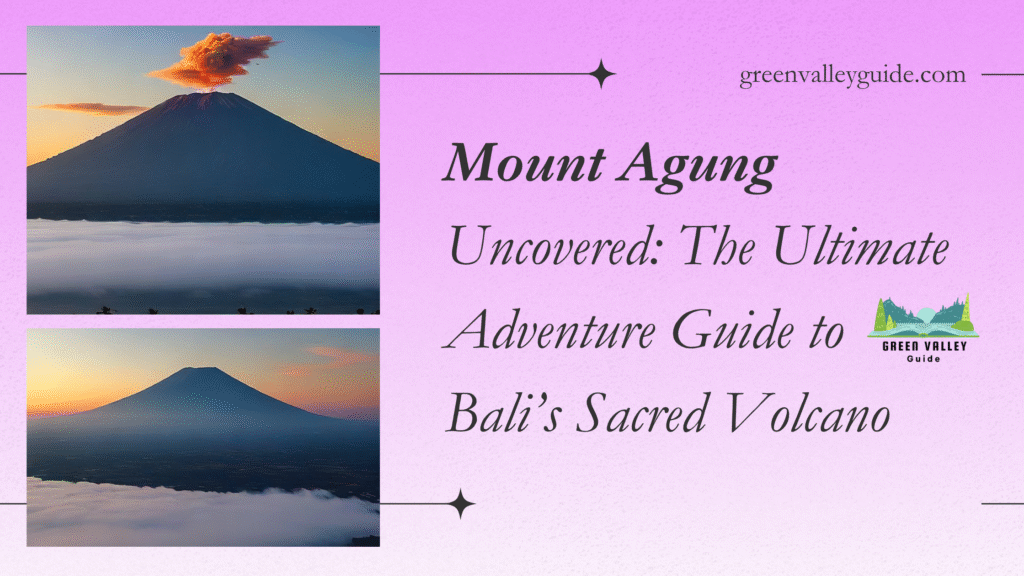Table of Contents
Introduction: Why Baliem Valley Deserves a Spot on Your Bucket List
Originally hidden in the depths of Papuan mountains, Baliem Valley can be considered one of Indonesia’s last undiscovered frontiers, a place where fascinating traditions and scenic beauty come to face each other. Contrary to the busy beaches of Bali or the metropolitan city of Jakarta, Baliem Valley promises a trip that one can never experience in everyday life, into a forgotten world.
It stretches with lush green fields, beautiful curves in the rivers, luxuriant and fertile fields to have dramatic mountains of the Jayawijaya Mountains in the backdrop. Every altitude level maintains the cool and crispy air all year through, and the environment is highly relaxing and gives an impression of being in another world, as compared to the humid heat present in Indonesia, which is in the lowlands. The pristine nature of Baliem Valley makes it a tourist hotspot as the home of eco-tourists, anthropologists, photographers, and trekking enthusiasts with a de novo goal of seeing more than a picture-perfect sunset.

However, the fact that Baliem Valley is so beautiful is not the only reason why it stands out; the people are. The valley has the Dani, Lan, and Yali tribes in it, and there are still the traditional lifestyles, old types of agricultural methods, ,and usages during the interior eras that were still present and being practiced in a localized area of the valley. The natives wear downbeat costumes, maintain 1,000-year-old rituals, and live in round houses that are called honai. The tourists in the present case not only capture a picture, but they also enjoy the true lifestyle that offers them the opportunities to explore the roots of humankind.
The actual rift between Baliem Valley and other common sites to visit is the authenticity of the site. No mega resorts and selfie sticks on every corner. What you will find is the gracious nature of the people, who are eager to share their culture, wild nature, which appears to be divine, and a close attachment to the land, the past, and to a more simplistic lifestyle.
To conclude, Baliem Valley is not a site to see. It is just an eye opener, it changes the person who goes there and shows them the other side of Indonesia that most never get to see, and the lifestyle so many of us have forgotten. That is why this secret place has to be on the bucket list of any adventurer.
Where Is Baliem Valley? Papua’s Hidden Highland Gem
Baliem valley is a valley in the central Papua highlands, Indonesia (Province of Highland Papua (was province of Papua)). The largest town in the region, Wamena, sits in the centre of the valley, and the region itself is 1600 to 1800 meters 5,2000 to 5,900 feet) above sea level. This high station causes the valley to be low in temperature and climatically, which is extremely uncommon in the state of tropical sites in the southern half of Indonesia.
Baliem Valley is situated in one of the intractable and inaccessible corners of the country, amid the monstrous Jayawijaya Mountains. The highest mountain in Indonesia is called Puncak Jaya (Carstensz Pyramid), and other mountains and peaks are scattered in the valley and contributing to the magnificent splendour evocative of drama around the mountain valley.
Baliem Valley is not only a natural wonder but a geographical art center of culture itself. It has been a critical abode of native Papuan people within a time span of thousands of years. The valley of wealth, grounded in such traits as cultural heritage, linguistic diversity, and ecological value,,s is an essential centre of the West Papuan cultural heritage, despite enjoying its remote positioning. It can provide its travelers with the unbelievable experience of the examination of nature, but also the living traditions of native people.
Rich Tribal Cultures of Baliem Valley: Meet the Dani, Lani & Yali
The most special thing about Baliem Valley is not only its dramatic landscapes, but also the ancient cultures of tribes that have existed in these valleys for centuries. There are three substantial ethnic groups in the area, namely the Dani, Lani, and Yali tribes, with their language, ways, and ancestral territory.
Most of the Dani people live (inhabit) in the central fragment of the valley, and they are possibly the most familiar, because ancient anthropological research worked with this population and is also like their famous traditional attire (men wear koteka (penis gourds), and women grass skirts, decorated with handmade accessories). The Dani are skilled farmers, and as a sustainable way of life, they grow sweet potatoes and pigs.
More to the west live the Lani people, who are closely related to the Dani, although having their own cultural identity and dialect to speak. The more distant Yali, of the eastern valleys, do live in still more secluded mountain villages, and are elastic and hardy at climbing over steep, woody ground.
Some of these rituals that are essential to this area are pig feasts, ancestor worship, and initiation ceremonies. The social structure is very communal, with elder councils and decisions by clan affiliation. The inter-tribal relations that used to be perpetuated by means of war are nowadays fulfilled symbolically during festivals and mock battles that guarantee retention of the cultural identity, at the same time bringing peace and unity.
Trekking Through Time: Best Hikes in the Baliem Valley
Trekking in Baliem Valley is not only an outing kind of thing, but it is a time-traveling excursion. Trekking takes you through sparsely populated tribal villages, across suspended bridges over crystal rivers, and up to green-covered highlands where tribal life is still a reality.
The most popular ones amongst them are:
- Wamena to Kurima to the villages of the Dani: An easy route that will show you what the Dani are.
- Wamena to Jiwika and the environs of hot springs: it is famous for its mummified ancestors and beautiful scenery.
- Long expeditions to the Yali land: These trips are targeted at seasoned adventurous trekkers through steep and wild terrain.
The levels are easy and half-day hikes around Wamena, and multi-day andd stamina and primitive conditions adjusted hikes. Tribal villages with homestays on the trail are always a good way to immerse oneself in another culture and understand the locals through their hosts.
Most of the visitors participate in guided treks organized by local tour operators, whereas solo travel is open to experienced adventurers. Guides are also used to find their way around the terrain, but are also used in translation and as cultural liaisons- this is so as to make sure that local cultures are respected in any way the travelers meet them.
Wildlife and Nature in Baliem Valley: A Biodiversity Treasure

Baliem Valley can be taken as a cultural miracle, but also a biological heaven. The valley is located in the highlands of Papua as an extension of the greater New Guinea ecosystem, one of the most ecologically diverse systems in the world. It has an isolated, mountainous vegetation that is home to unusual species of flora and fauna, with no other eco location.
Its lush forests that encompass the valley also abound in the varieties of ferns, mosses, and some tall tree ferns, whereas soft orchids flower in the cool foggy atmosphere. Papua has more than 2,000 species of orchids, most of which are endemic to the highlands.
The region will prove to be a paradise to birdwatchers because Papua is the habitat of the famous Birds of Paradise, which have brilliant colorings and interesting mating rituals. Other birds are parrots, cockatoos, lorikeets, and mountain pigeons.
On mammals and reptiles, the biodiversity is yet to be studied, but it contains tree kangaroos, Papuan forest wallabies, and rare marsupials. These species have been conserved because the valley is isolated, nd thus the species are not affected by the issues that affect the other parts of Indonesia.
There is an urgent issue of conservation, nevertheless. As people develop and open tourist resorts, there are attempts to establish eco-tourism, to avoid natural habitats, and to help locals maintain their environment. The sensible tourism here will work in direct ways to secure the future of this ecological jewel.
How to Get to Baliem Valley: Your Adventure Starts Here
The possibility to visit Baliem Valley is a sort of trip to uninhabited nature, and it is worth such a trip. Only an air route can reach this area because the region is hilly; hence, this town of Wamena wins the title of the gateway to the valley.
The nearest international airport is Sentani Airport (DJJ), Jayapur, the capital of Papua Province. Those can then enjoy domestic flights to Wamena Airport (WMX), which is typically served by smaller regional airline companies (either Wings Air or Trigana Air). These are routine flights, and they are weather-sensitive; hence, flexibility is the name of the game.
Since Papua is a special administrative region, people visiting the region (including Indonesians from other provinces) should receive a Surat Izin Masuk Daerah Terbatas (SIMAKSI) or a travel permit. This is normally organized in Jayapura or by your tour operator. You need a valid passport or ID, passport-sized photos, and travel information.
When one has reached Wamena, the mode of transport is rudimentary, though adequate. In order to get around:
- Bemos (shared minivans)
- Motorcycle taxis (ojek)
- Private cars with drivers (best for treks or longer stays)
It is strongly suggested to hire a local guide or a kind of fixer, both to solve the logistical part, as well as to ease the passage through the local culture and language.
Check Out: Mount Slamet Hiking Guide: Conquer Indonesia’s Majestic Volcano Peak.
Where to Stay in Baliem Valley: Lodges, Homestays & More
Although Baliem Valley is secluded, it has a variety of accommodation to choose from, whether simple guesthouses or full immersion into the culture, offering cultural homestays.
Lodges & Guesthouses in Wamena
There are also a number of comfortable lodges and small hotels in Wamena to take care of tourists:
- Baliem Pilamo Hotel- This is one of the famous hotels among travellers
- Hotel Nayak: Cheap local charm
- Baliem Valley Resort (just outside Wamena )- Traditional guided treks and luxury eco lodge
These are those offering basic facilities such as bathrooms, hot showers, and mosquito nets.
Cultural Homestays
To have a more true-to-life experience, you can stay with a local Dani or Yali family within a traditional honai (a round hut with a thatched roof). You will eat, see everyday life, and experience the local culture firsthand.
Homestays usually include:
- Simple bedding (usually bamboo floors)
- Meals cooked in wood (sweet potatoes, greens, and pork during special occasions)
- Common or outdoor facilities
This is not the kind of stay that luxury finders enjoy, but it is highly fulfilling to the person who is in search of authenticity and cultural interaction.
Best Time to Visit Baliem Valley: Weather, Seasons & Festivals
The climate of Baliem Valley is highland tropical, cooler than low lowlands, but it is rather wet throughout the year, yet certain months are drier and more trekkable, interesting in regard to the cultural visits.
Dry Season (Best Time to Visit)
- The most appropriate time to visit is between May and October
- Days are clearer, and the routes of trekking routes are more available
- It is also in August during the Baliem Valley Festival, which makes it the best time and place to immerse oneself in the culture
Wet Season (November to April)
- Be ready to be rained upon, mudplugged, and forced to wait sometimes at the airport Delta counter to see your flight taking off when your name comes up to be called before being allowed to board your flight home.
- Nevertheless, the countryside is green and rich, and there are not so many tourists.
In case you intend to have trekking and village tours, schedule your trip between June and September. August is a must-attend festival for festival-goers, but book the accommodation in advance.
Travel Tips for Visiting Baliem Valley Like a Pro

What to Pack
- Layering: It is warm in the day and cold at night (especially in the mountains)
- Rain gear: Rain jacket, drying clothes, and backpack covers
- Trekking boots: Strong and waterproof
- Headlamp or flashlight, simple first aid, arriving at the scene, power bank, and water purifier/tablets
Cultural Etiquette
- Never take photos without permission, whether of a person or a house
- Admire local traditions. Do not make PDA or wear indecent clothes
- Learn a few words of Bahasa Indonesia or the local dialect (your guide can help)
Health & Safety
- There are rudimentary medical institutions in Wamena; carry personal meds
- Eat and drink cooked food and water to prevent stomach troubles
- You will need to travel together with a local guide to be safe in places where it is difficult to communicate, and also to be more comfortable in terms of cultural interaction
Conclusion: Unlock the Timeless Magic of Baliem Valley
Modernizing fast, Baliem Valley is one of the last remaining fragments of nature and culture. Perched in the secluded mountains of Papua, it is a very unique experience that awaits the voyager, through hilly topography and wild sights, ancient tribal customs, and a lifestyle that feels so earthling.
Be it the joy of the hike through the unspoiled nature, the spectacularly coloured beauty of the Baliem Valley Festival, or the possibility to communicate with the people who did not lose touch with the land, this place turns you upside down and never gives you a chance to be the same person twice you travel.
Visiting Baliem Valley is like coming home to yourself, learning to appreciate feeling, and preparing your soul to embrace a vast amount of knowledge. It is time to add this extraordinary destination to your list of must-visit destinations, especially in case you are looking to go beyond the beaten track as a tourist.
For more info: Click Here.
FAQs About Baliem Valley
Q1: Is there a special permit to come to Baliem Valley?
Yes. To enter Baliem Valley, all foreign visitors (and some domestic visitors) should have a travel permit named Surat Izin Masuk Daerah Terbatas (SIMAKSI). This may normally be booked in Jayapurawith a decent local tour operator.
Q2: Is Baliem Valley safe to travel alone?
Baliem Valley is usually safe with travelers, but since it is way out there, it is highly advisable to choose the company of a guide. Local expertise will help in traveling to villages without offending them and in negotiating any linguistic or cultural barriers.
Q3: How to get the most out of visiting the tribal culture in Baliem Valley?
Most engaging is a form of cultural homestay, either living in a traditional village or attending the Baliem Valley Festival in August. Trekking with overnights on local Dani or Yali tribes is a mutual way to interact with people.

